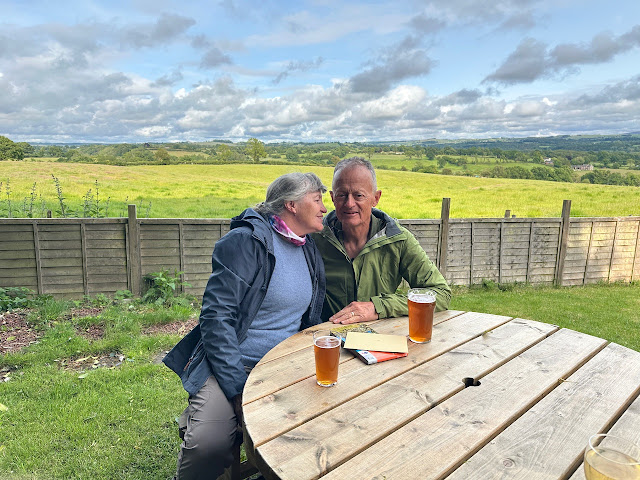Bardon Mill was not part of my plans for walking the Hadrian’s
Wall path. The town is too far off the trail and the AD122 bus doesn’t pass
through it. Circumstances, however, forced me to book rooms there, and I am
glad I did.
Bardon Mill is a little over a mile south of Vindolanda, which itself is two miles south of Hadrian’s Wall. While the museum and excavations at Vindolanda definitely make it worth the detour, I could find no good reason why I should deviate an additional distance to see Bardon Mill. When you’re walking 10-12 miles a day, addingt hree extra miles is pretty daunting. Most hikers, and that
includes me, want to find lodgings as close to the trail as possible.
For this section of the trail, that would have meant finding
rooms in Once Brewed. However, we were a group of six, and Once Brewed is a
very popular place. There were no rooms to be had, and once I began searching,
it became apparent that there were no rooms to be had for miles around. I cast
my net wider and wider, and finally found lodging for six in Bardon Mill. Some
of the people in my group were skeptical about my choice, and I couldn’t blame
them.
The trail south from Vindolanda made it clear that Bardon
Mill is not overly popular with hikers. It was
not well marked, and we got lost
a couple of times, but basically, the trail runs down a little valley through a
lush forest. We saw no one else as we walked. At the bottom of the valley, we
had to cross a very busy freeway, the A69, but once we had, we were enchanted by what we
saw.
Errington Reay & Co is the only commercial pottery in the United Kingdom that is currently licensed to produce salt glaze pottery. It was established in the village in 1878 and appears to still be going strong.It was right next door to our lodgings, so that when I looked out my window, I saw pottery. They made a large variety of wares, including these delightful chickens.
We stayed in the Bowes Inn, the pub that also seemed to be the center of social life in this village of 450 people. The staff was welcoming from the moment we walked in the door. We ate breakfast (included with the room) and dinner with them, and they packed lunches for us to eat on the trail.
While we were there, there was a pool tournament going on in the pub. Apparently, the Leek club has a show here every year, at which the produce from which is auctioned off to raise funds for local charities. Bardon Millers are evidently very proud of their leeks. There were numerous pictures of them on the walls of the pub.
But their hospitality didn’t end there. Knowing that there
was no bus to accommodate us, we were offered rides up to the wall. Because
they are not a taxi service, our drivers could not charge us a fee, but hoped
that we would provide them gas money, which we willingly did. We stayed two
nights. The first morning we got rides back to Steel Rig, so that we could walk
from there to Housesteads. This allowed us to walk some of the trail we missed
by taking the bus from Walltown Quarry to Vindolanda, and we were glad we did
because that section of the trail was spectacular. The second day we got rides
to Housesteads so we could continue on our way east along the wall.
This was a bit of an inconvenience for the staff. Because they have no bus and there are no schools in the village itself, their own children need rides to schools in the neighbouring villages of Henshaw, Haltwhistle, and Haydon Bridge. Offering rides to hikers is a second priority. I got the feeling that this town would love having the AD122 pass through, both so that their children could use it and to attract more tourists.
The staff at the Bowes Inn treated us like family, the food
was good, and the rooms were cozy and quiet. By the time we left, we were all
in agreement that staying in Bardon Mill was not the bad idea we had all
feared.












.jpg)


















.jpg)






.jpg)

.jpg)

.jpg)










.jpg)



